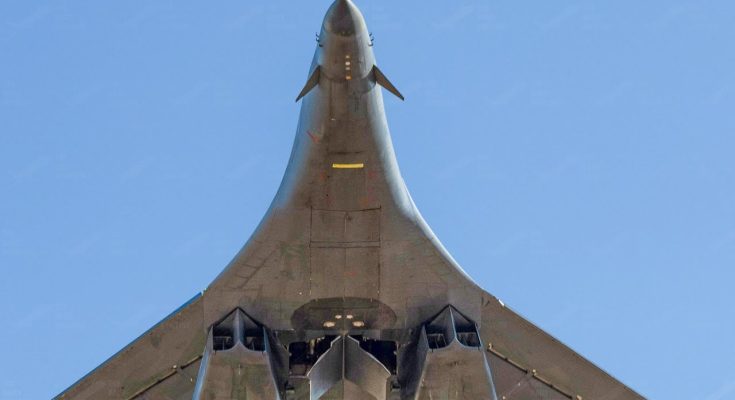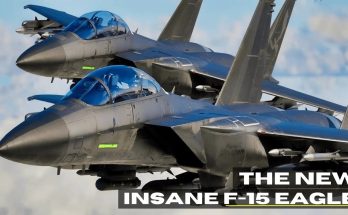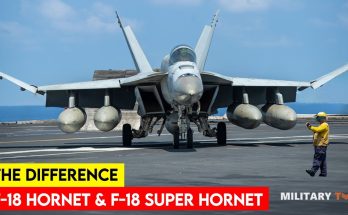Flying US Gigantic Supersonic Bomber: The Future of High-Speed Airstrike Capability
As modern warfare continues to evolve, the demand for faster, more capable strike platforms has become increasingly vital. In this context, the U.S. military is working on the development of an entirely new class of aircraft — a gigantic supersonic bomber designed to revolutionize long-range strike capabilities, providing the U.S. Air Force with an unprecedented edge in combat. This new bomber, expected to reach supersonic speeds, promises to change the way the military executes deep strikes and global reach missions.
The Vision: Supersonic Speed Meets Stealth and Firepower
The U.S. is looking to push the boundaries of what’s possible in aviation with a bomber that integrates cutting-edge technologies. This gigantic bomber would combine the speed and range of supersonic flight with stealth features, advanced avionics, and the ability to carry a significant payload of both conventional and advanced munitions. The goal is to create a platform that can outpace any adversary’s air defenses while delivering devastating payloads with precision.
Key Features of the Gigantic Supersonic Bomber
-
Supersonic Speed for Rapid Strike Capability
The primary feature of this bomber will be its supersonic speed. Operating at speeds greater than Mach 2 (about 1,500 mph), this bomber will be capable of traveling vast distances at high speeds, drastically reducing the time it takes to reach a target. With supersonic capabilities, the bomber can effectively conduct rapid-response strikes in high-priority combat zones, where time is of the essence.
-
Mach 2+ speeds will allow the bomber to outrun enemy air defenses and interceptors, maintaining air superiority in hostile environments.
-
The bomber’s ability to supercruise (maintain supersonic speeds without using afterburners) will also significantly enhance fuel efficiency, allowing it to cover long distances without needing frequent refueling.
-
Massive Payload and Versatility
One of the key aspects of the gigantic supersonic bomber is its ability to carry a massive payload, making it a versatile platform for a variety of missions. Unlike smaller stealth bombers, this bomber will be able to transport a broad range of munitions, including precision-guided bombs, hypersonic weapons, and even nuclear payloads if necessary.
-
With an internal payload capacity that rivals or surpasses current bombers like the B-2 Spirit and B-52 Stratofortress, it can carry a large arsenal of advanced guided missiles and bombs, enabling it to strike multiple targets in a single mission.
-
The bomber will also be capable of launching next-generation hypersonic weapons, providing the U.S. military with a platform to deploy long-range, high-speed strikes with pinpoint accuracy.
-
Stealth and Survivability
The gigantic supersonic bomber is designed to fly deep into enemy territory without being detected by advanced radar systems. To achieve this, the bomber will be equipped with stealth technology, including:
-
Radar-absorbing materials and shaping to minimize its radar cross-section (RCS), making it difficult to detect by enemy radar.
-
Advanced coatings that reduce the aircraft’s infrared signature, helping it avoid detection by heat-seeking missiles or sensors.
-
Active countermeasures like electronic warfare (EW) systems, which can jam or confuse enemy radar and missile tracking systems.
These stealth features will allow the bomber to operate in contested airspace where traditional aircraft would be vulnerable, providing it with a significant operational advantage over adversaries.
-
Advanced Avionics and Artificial Intelligence
The bomber will be equipped with the latest avionics and sensor systems to ensure its effectiveness in modern warfare. These systems will be integrated into a smart cockpit with AI-assisted decision-making capabilities, helping pilots or autonomous systems make real-time tactical decisions during high-stakes combat scenarios.
-
Sensor fusion will integrate data from radar, infrared sensors, and communication systems, giving the pilot a comprehensive picture of the battlespace.
-
AI-driven flight control systems will assist the pilot in evasive maneuvers and decision-making, reducing the workload on human operators while enhancing mission success rates.
-
The bomber will also be equipped with advanced cybersecurity systems to protect it from potential threats in a digitally connected combat environment.
-
Long-Range and Global Reach
With the capability to travel thousands of miles at supersonic speeds, this bomber will have an unprecedented global reach, allowing it to strike any target anywhere in the world. Unlike current bombers that often require refueling or must operate in the vicinity of friendly airbases, this supersonic bomber will be able to conduct deep strike missions with far less logistical support.
-
Extended range will allow the bomber to strike distant targets and return without needing multiple refueling stops, increasing its mission flexibility.
-
The bomber’s operational radius will make it capable of conducting operations in regions far from U.S. soil, ensuring that the U.S. military can project power on a global scale.
-
Crew or Autonomous Operation
While it is likely that this gigantic bomber will have a manned cockpit initially, future versions may incorporate autonomous or semi-autonomous flight capabilities, which would significantly reduce operational costs and increase mission flexibility.
-
Autonomous systems could handle much of the flying and decision-making, with human operators only involved in key strategic decisions or in high-threat environments.
-
This unmanned capability would enable the bomber to operate in environments that are too dangerous for human pilots, while still being able to perform complex missions with precision and efficiency.
Strategic Impact: A Game-Changer in Global Power Projection
The introduction of the gigantic supersonic bomber would dramatically shift the balance of power in global warfare. With its supersonic speed, massive payload capacity, and advanced stealth features, this aircraft will serve as an unrivaled asset in the U.S. Air Force’s arsenal. The bomber’s versatility will allow it to conduct a wide range of missions, from strategic bombing to precision strikes and global deterrence.
-
The bomber will bolster the U.S. military’s deterrence capabilities, ensuring that potential adversaries know the U.S. can strike with overwhelming force at any time, from any place.
-
Its ability to carry hypersonic weapons will provide the U.S. with a next-generation strike capability, enabling rapid and highly destructive attacks on enemy targets without giving them time to react.
-
By combining the speed of supersonic flight, advanced stealth, and cutting-edge avionics, this bomber will be able to penetrate even the most sophisticated air defense systems, ensuring that no target is out of reach.
Conclusion: The Future of Air Warfare
The gigantic supersonic bomber represents a bold step into the future of air warfare. With its unparalleled combination of speed, stealth, firepower, and global reach, it will redefine what is possible in strategic bombing and air superiority. As military technologies continue to evolve, the development of this supersonic bomber underscores the U.S. commitment to maintaining technological superiority in the skies — ensuring that it remains the dominant force in the global arena for decades to come.
In an era of rapidly advancing threats, the gigantic supersonic bomber is not just a concept; it’s the future of high-speed airstrike capability.



